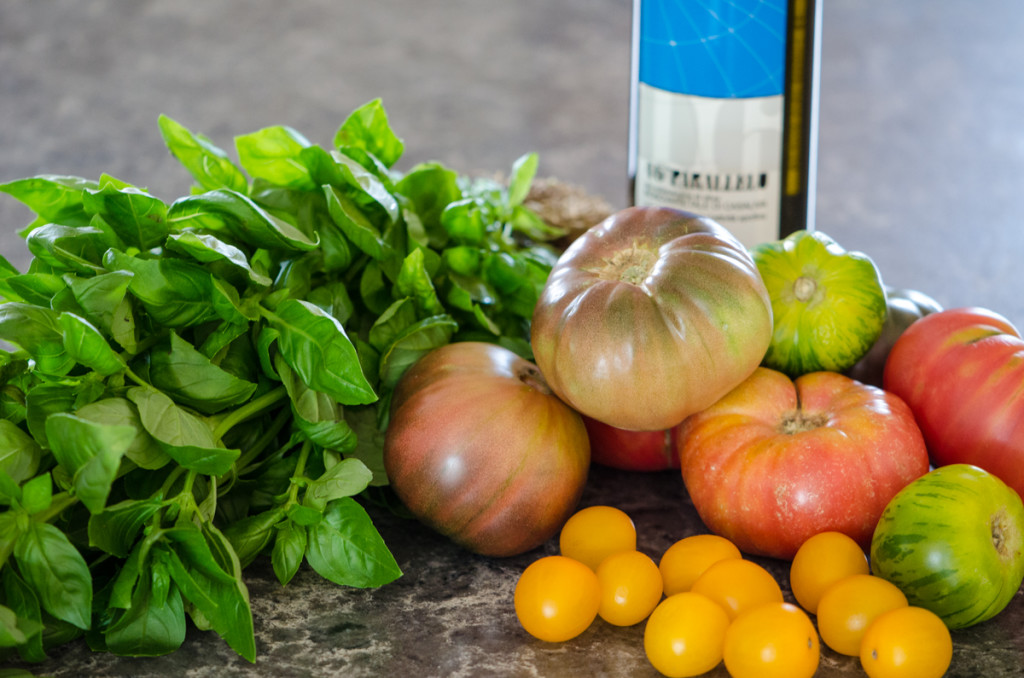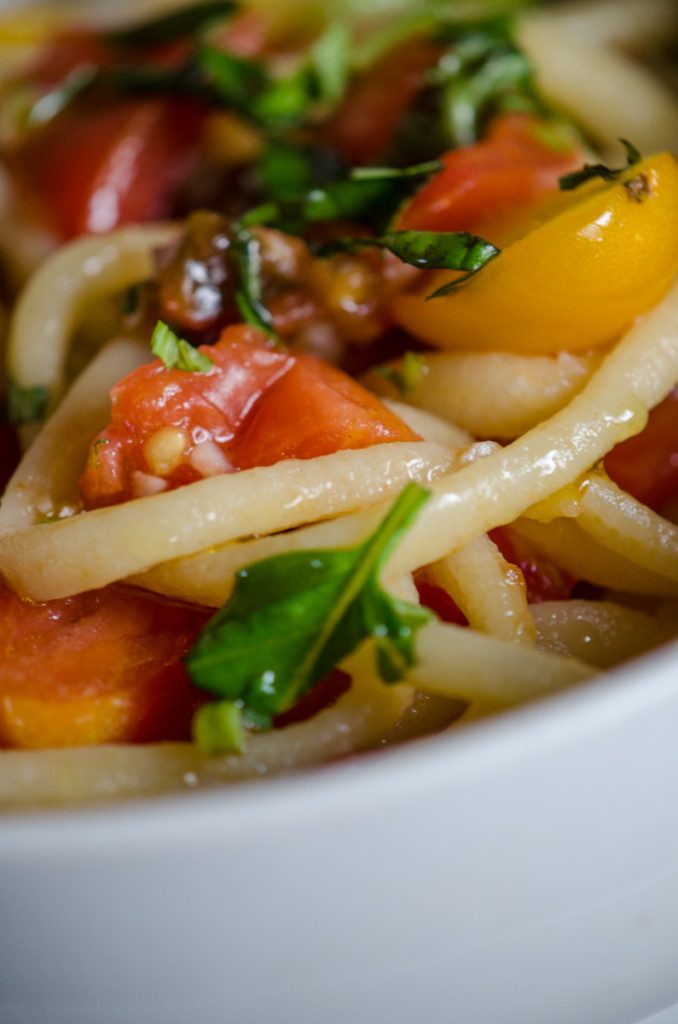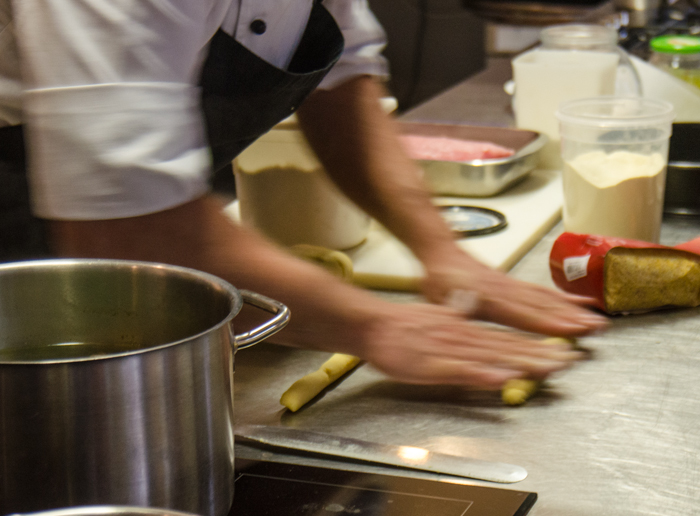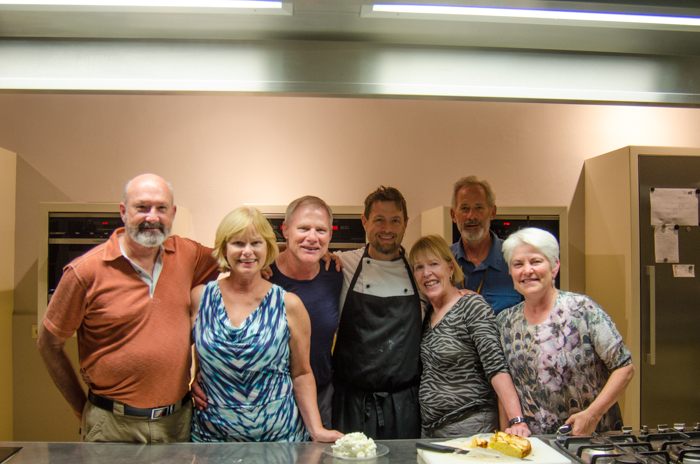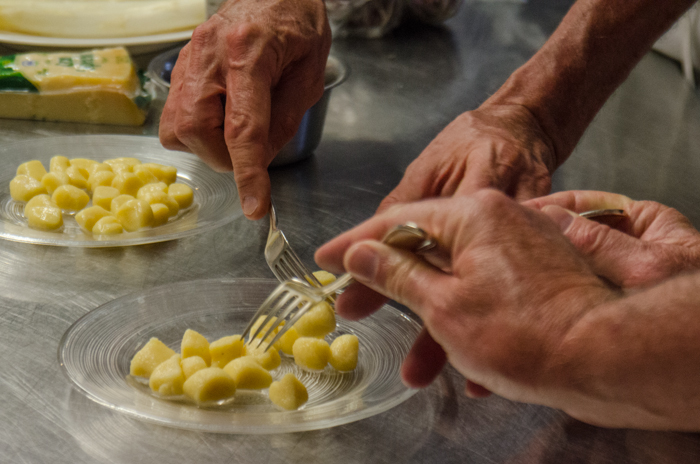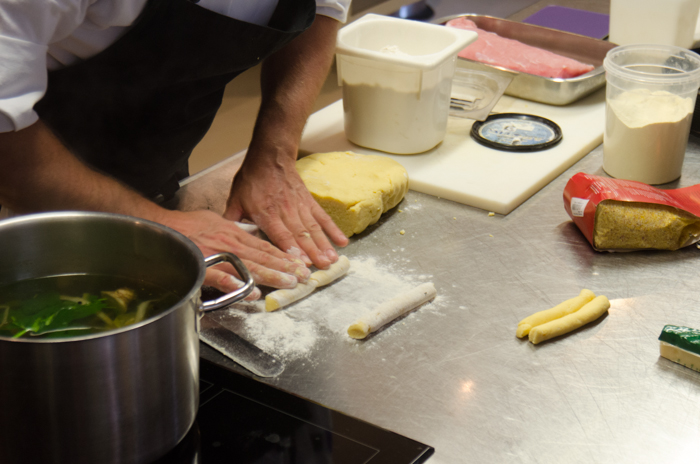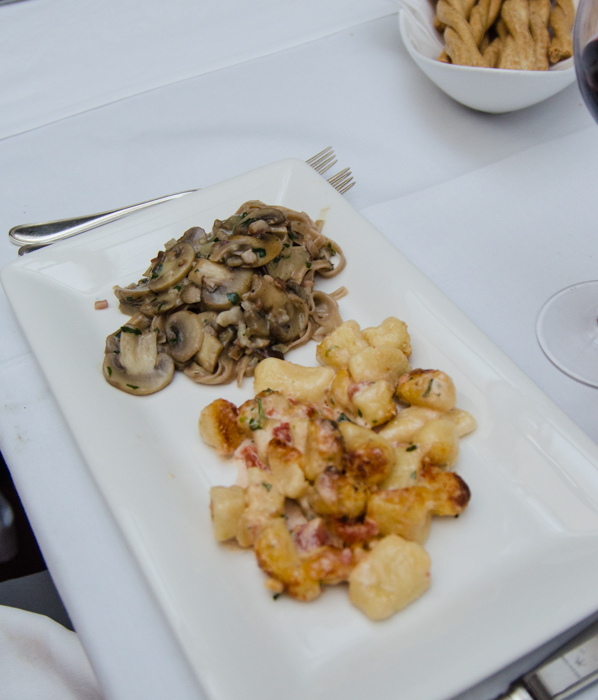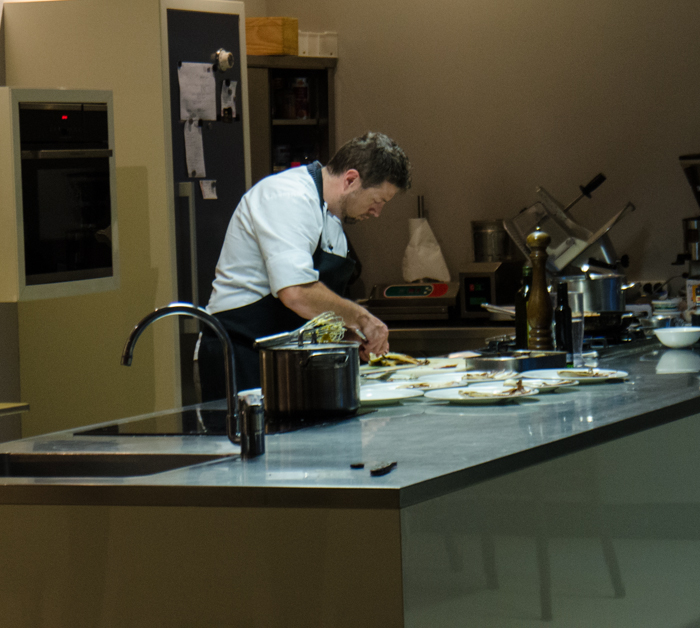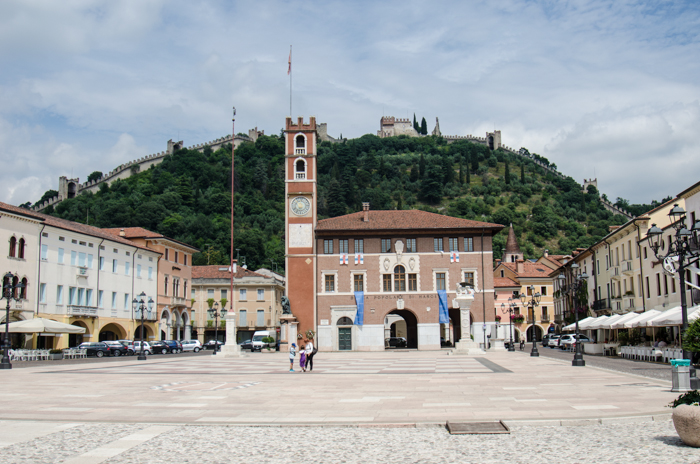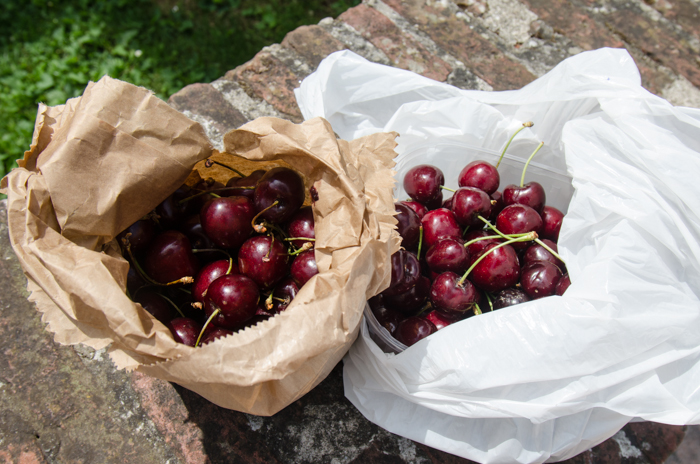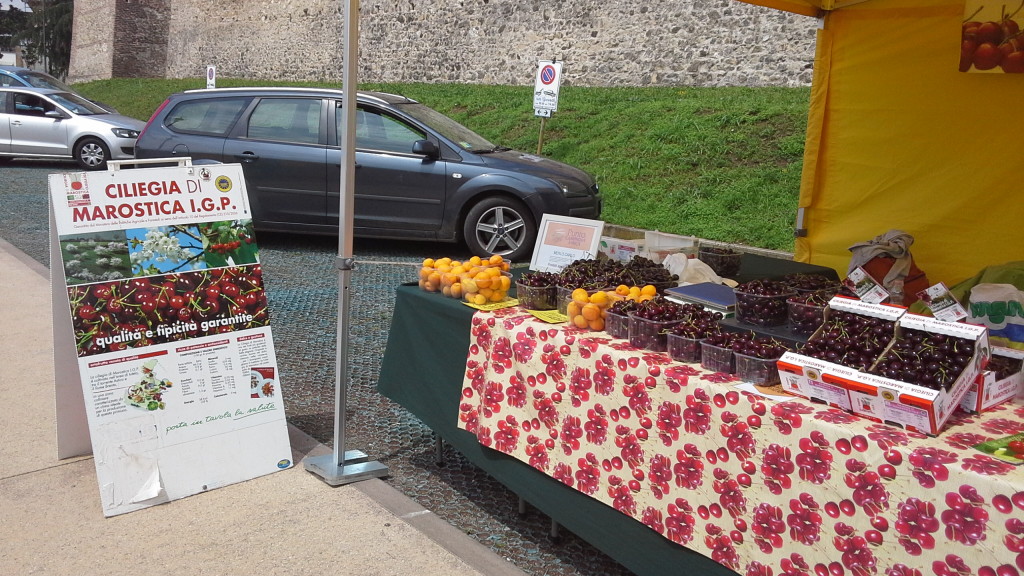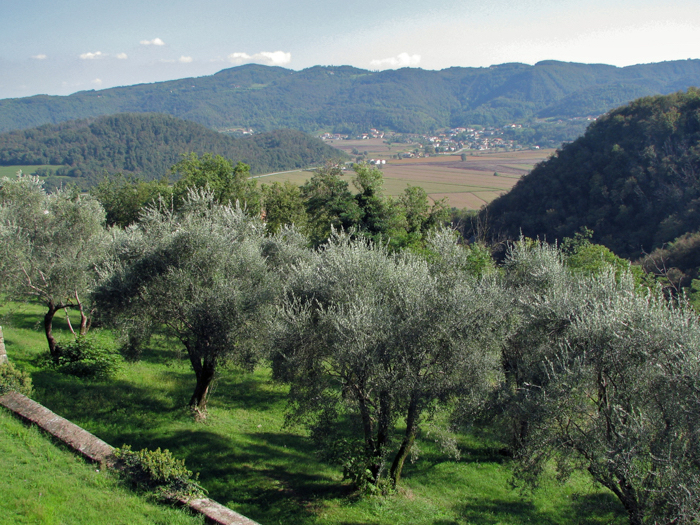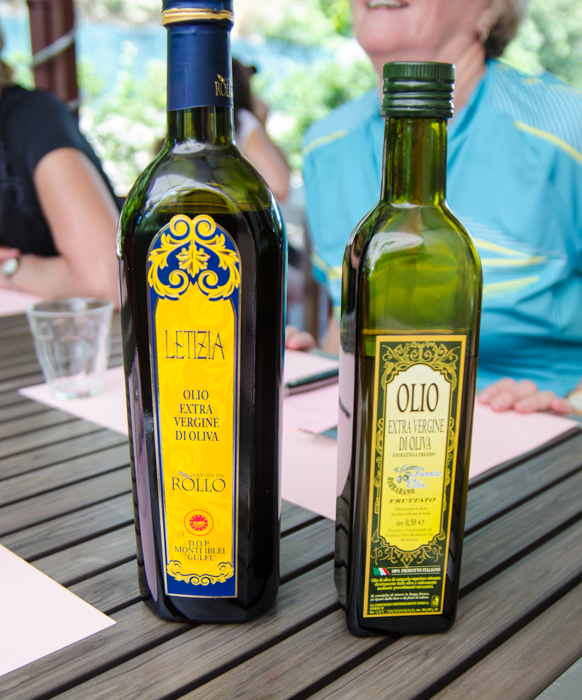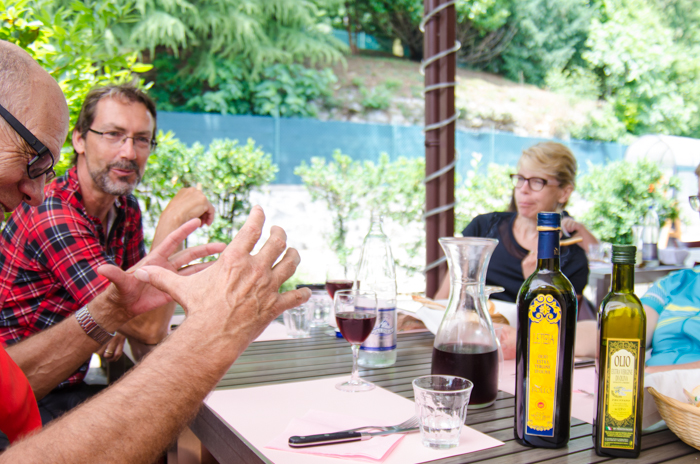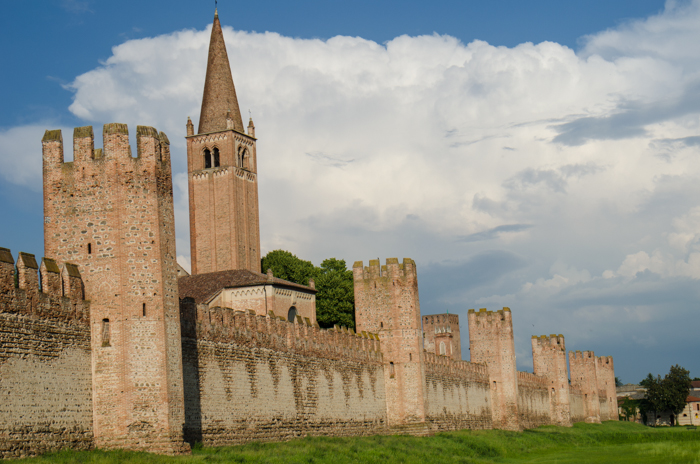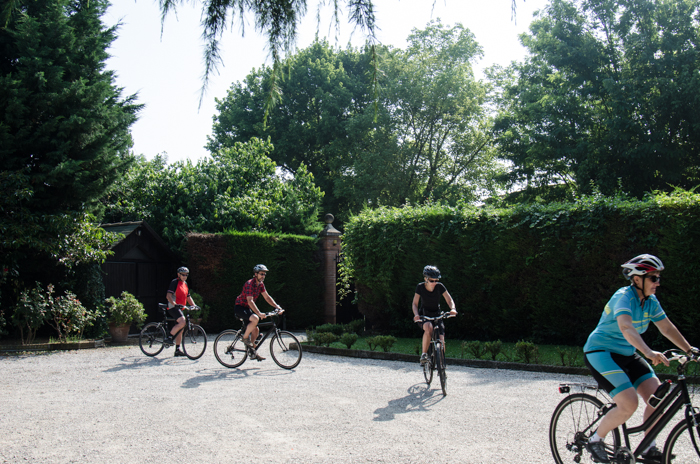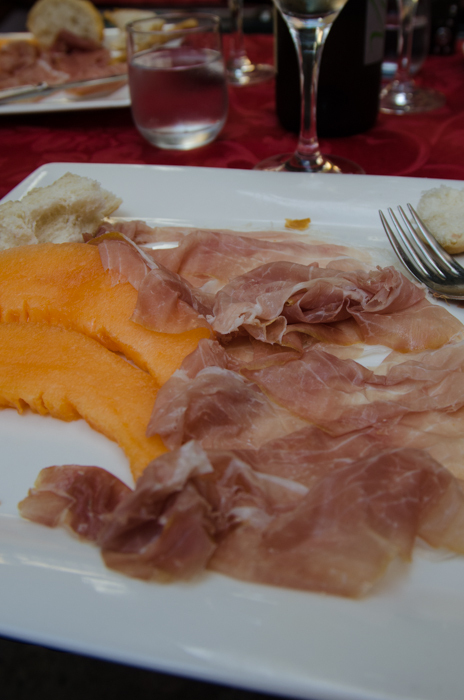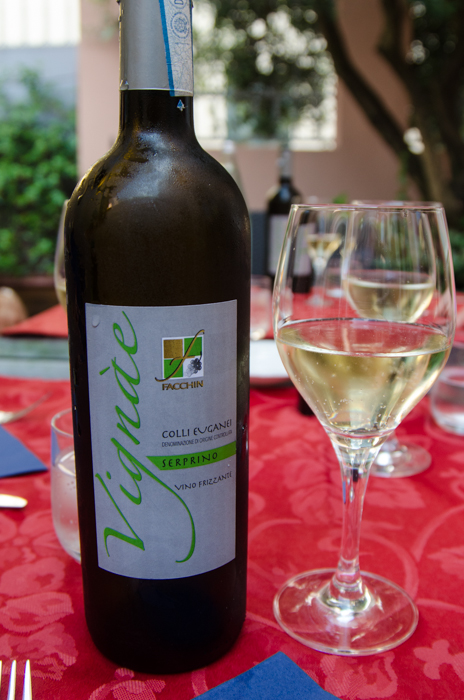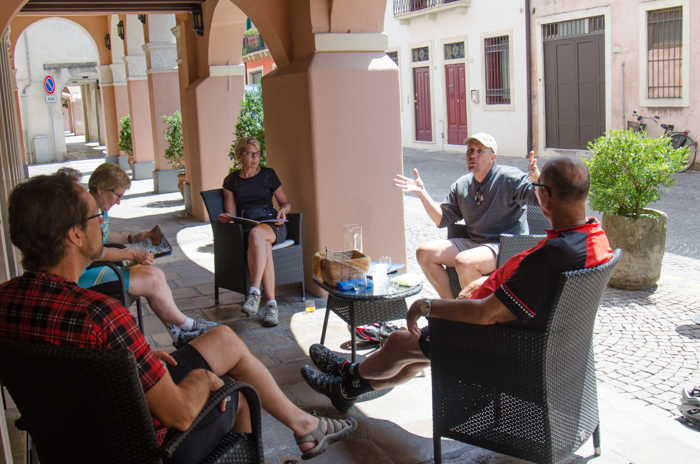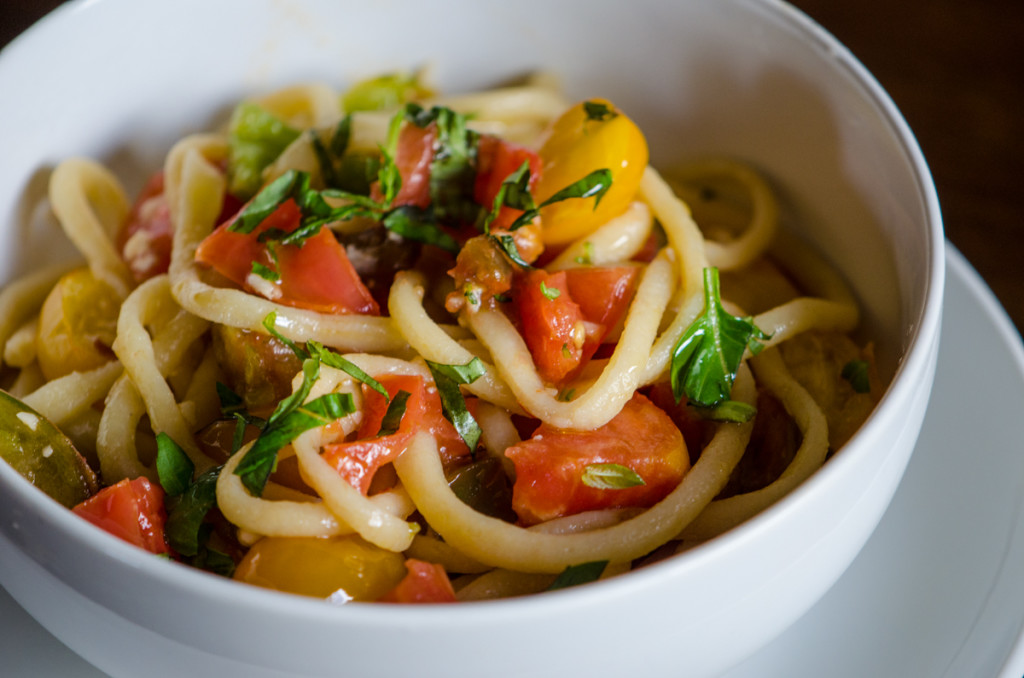 After a day of cycling in the hills of Tuscany, or walking through the vineyards outside of Montalcino or Montepulciano, our favorite pasta lunch is a plate of pici all’aglione. Pici is a rustic handmade pasta from Tuscany’s Val d’Orcia. Called pici in Cortona and Montepulciano, and pinci in Montalcino, they are a long, irregular spaghetti, best when “fatta a mano” or “fatta in casa”, made by hand, or in house. The name pici comes from the term “appiciare”, which refers to the traditional manual technique used to form these long, thick noodles. Ancient in origin, dating back to the Etruscans, they were made from only flour and water, the poor everyday pasta of the Sienese peasants. Including a small amount of egg was the rich version, reserved for Sundays and holidays.
After a day of cycling in the hills of Tuscany, or walking through the vineyards outside of Montalcino or Montepulciano, our favorite pasta lunch is a plate of pici all’aglione. Pici is a rustic handmade pasta from Tuscany’s Val d’Orcia. Called pici in Cortona and Montepulciano, and pinci in Montalcino, they are a long, irregular spaghetti, best when “fatta a mano” or “fatta in casa”, made by hand, or in house. The name pici comes from the term “appiciare”, which refers to the traditional manual technique used to form these long, thick noodles. Ancient in origin, dating back to the Etruscans, they were made from only flour and water, the poor everyday pasta of the Sienese peasants. Including a small amount of egg was the rich version, reserved for Sundays and holidays.
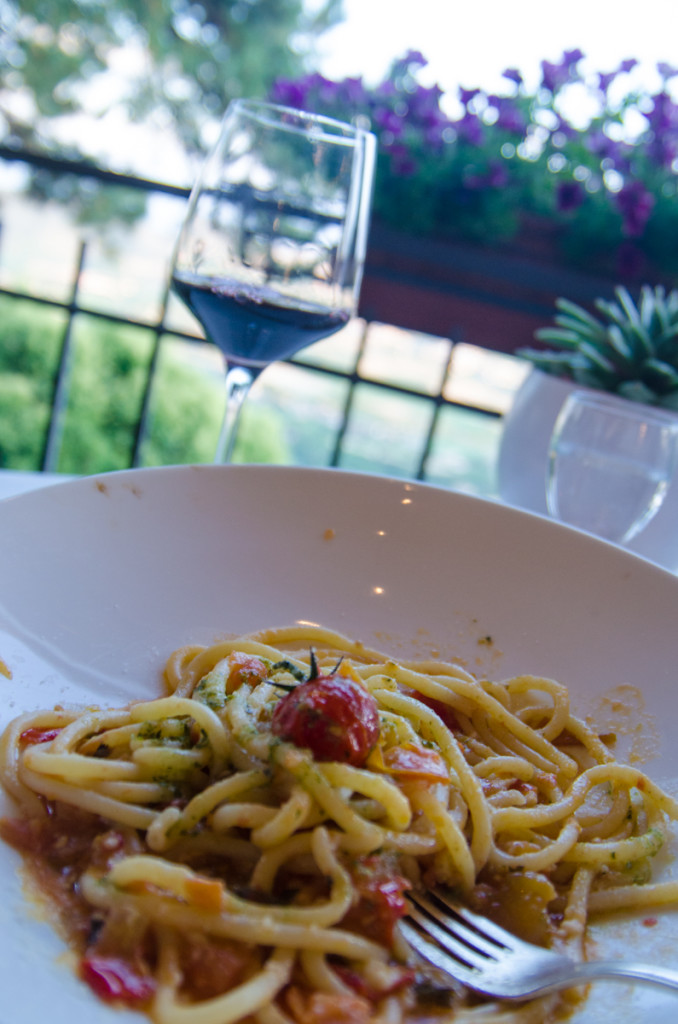
There are several different ways of producing pici, all of which require only your hands, a wooden board, and optionally a rolling pin – no pasta machine needed. I’ve made it in Italy with a local chef, and we simply pinched off pieces of dough and rolled them between our palms or on a wooden board to form 1/4 inch round snakes from the dough. Unless you are quite adept at this technique, this will result in shorter noodles, around 6 inches in length or so.
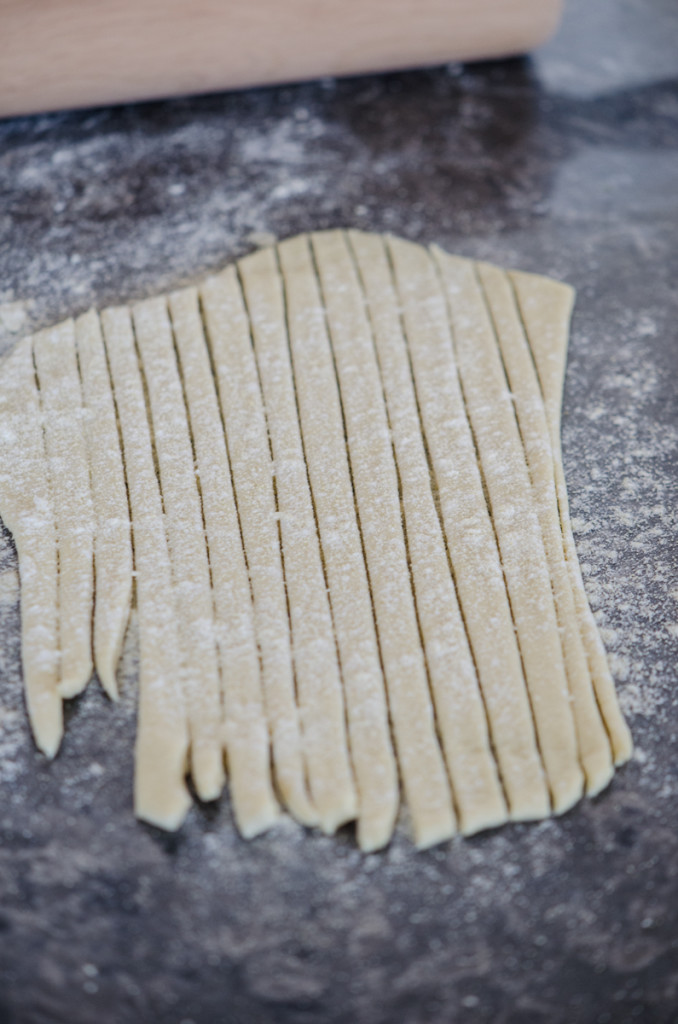 The traditional “appiciare” technique involves rolling out a larger quantity of dough into a sheet around 1/4 to 1/2 inch thick. You cut a strip of dough about 1/4” thick from this sheet, grasp one end in your fingers to hold, then, using a flat palm, roll the noodle back and forth on a floured wooden board to round and lengthen. The result should be a rounded, thick spaghetti that can, in expert hands, reach 3 – 6 feet in length. Here’s a YouTube video showing this technique.
The traditional “appiciare” technique involves rolling out a larger quantity of dough into a sheet around 1/4 to 1/2 inch thick. You cut a strip of dough about 1/4” thick from this sheet, grasp one end in your fingers to hold, then, using a flat palm, roll the noodle back and forth on a floured wooden board to round and lengthen. The result should be a rounded, thick spaghetti that can, in expert hands, reach 3 – 6 feet in length. Here’s a YouTube video showing this technique.
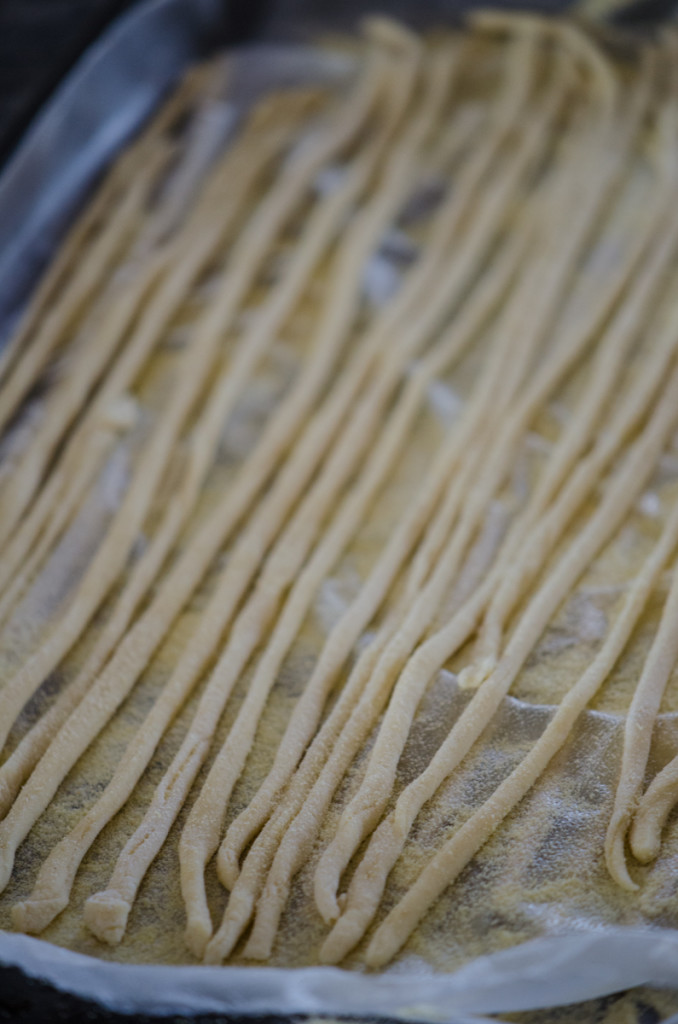
As I am not an expert in appiciare, I did a little bit more work with a rolling pin to minimize the rolling by hand. I rolled out a larger quantity of dough into a sheet around 1/8” thick, then cut this sheet into thin flat strips around 1/4” wide. I then attempted to roll the noodles with my palm, but I made these on a granite counter top, and my flat noodles didn’t roll, they just slid around. You really need the traction of the wood board. So I simply twisted each flat strip between my thumb and fingers to form the long round spaghetti, and that worked pretty well. The result are long, fairly thick, irregular noodles. This is a rustic, peasant dish, so don’t worry overly much about making perfectly formed, uniform noodles!
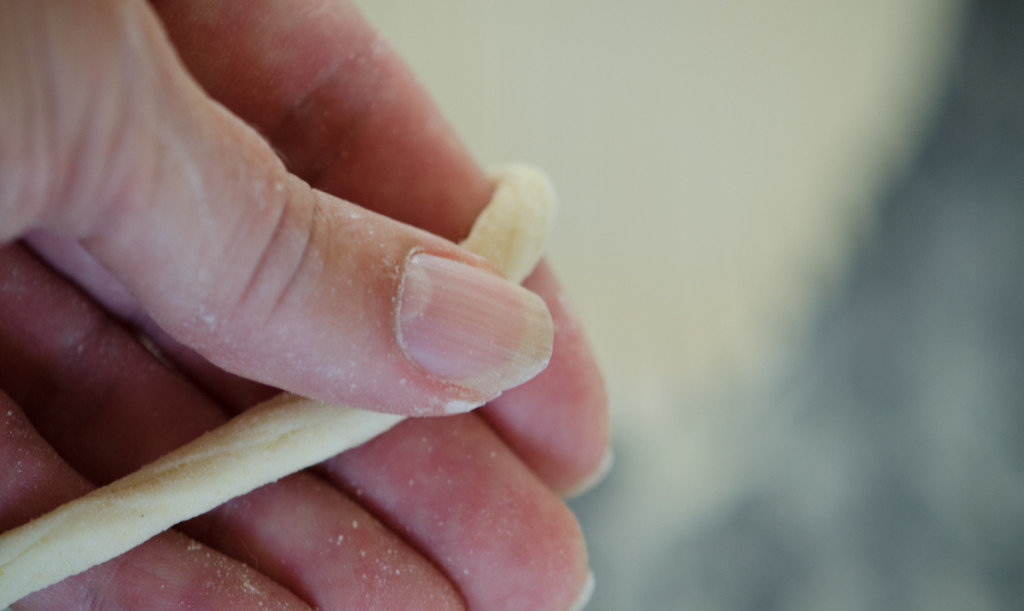
There are several different traditional accompaniment for pici, but in the late summer my favorite is all’aglione, a simple sauce made from fresh tomatoes, lots of garlic, and a great olive oil.
I would always pair with a local wine – in Cortona, a Cortona Syrah. In Montepulciano, a Rosso or Vino Nobile. In Montalcino, a Brunello.
Pici all’Aglione
Serves 4
1 3/4 cups all-purpose flour
1 3/4 cups semolina flour
1 1/2 teaspoons salt
1 cup plus 3 tablespoons warm water
5-6 medium fresh heirloom tomatoes, or a mix of full size and cherry tomatoes
2 tablespoons extra virgin olive oil, plus more for drizzling
1 teaspoon hot red pepper flakes
4 large cloves garlic, minced
10 basil leaves, chiffonade
Kosher salt
Place the flours and salt in a small bowl and stir to combine. Pour the flour out on a clean counter, and form a well in the middle. Pour the warm water into the well.
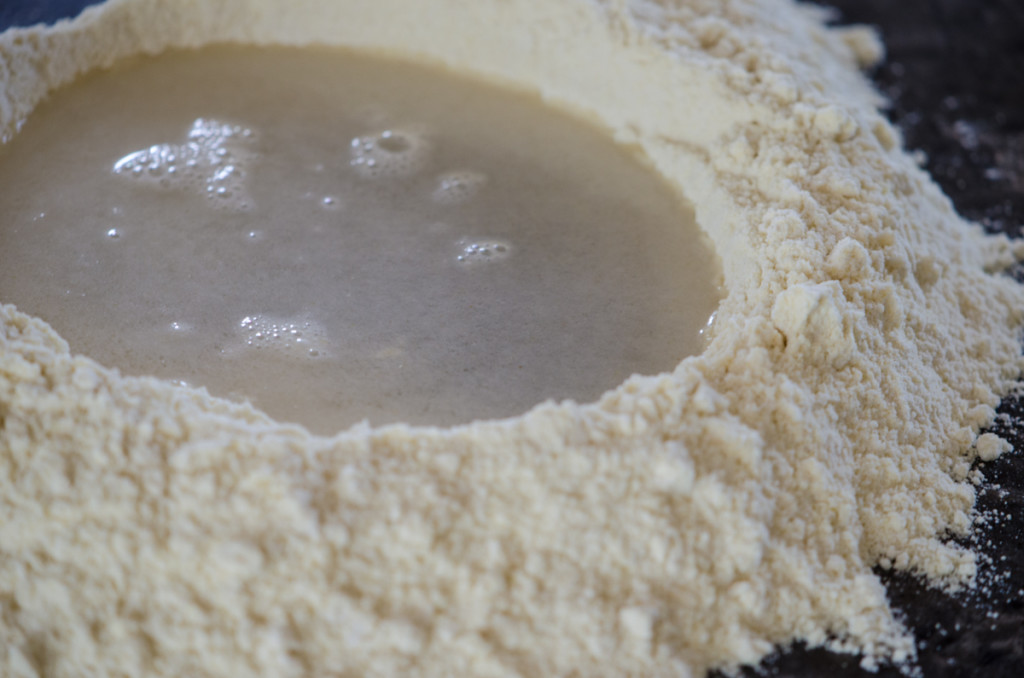 Using a fork, begin to scrape some of the flour from the inner sides of the well into the water, slowly incorporating more and more of the flour. The water in the middle will thicken and become a soft dough. Eventually you will be able to loose the fork and just use your hands. Keep incorporating the flour as needed to keep your dough from sticking to your hands and the counter top. You do NOT need to incorporate all of the flour, the amount of flour will depend on the type, the humidity, and other variables. You want a nice soft dough, not too sticky.
Using a fork, begin to scrape some of the flour from the inner sides of the well into the water, slowly incorporating more and more of the flour. The water in the middle will thicken and become a soft dough. Eventually you will be able to loose the fork and just use your hands. Keep incorporating the flour as needed to keep your dough from sticking to your hands and the counter top. You do NOT need to incorporate all of the flour, the amount of flour will depend on the type, the humidity, and other variables. You want a nice soft dough, not too sticky.
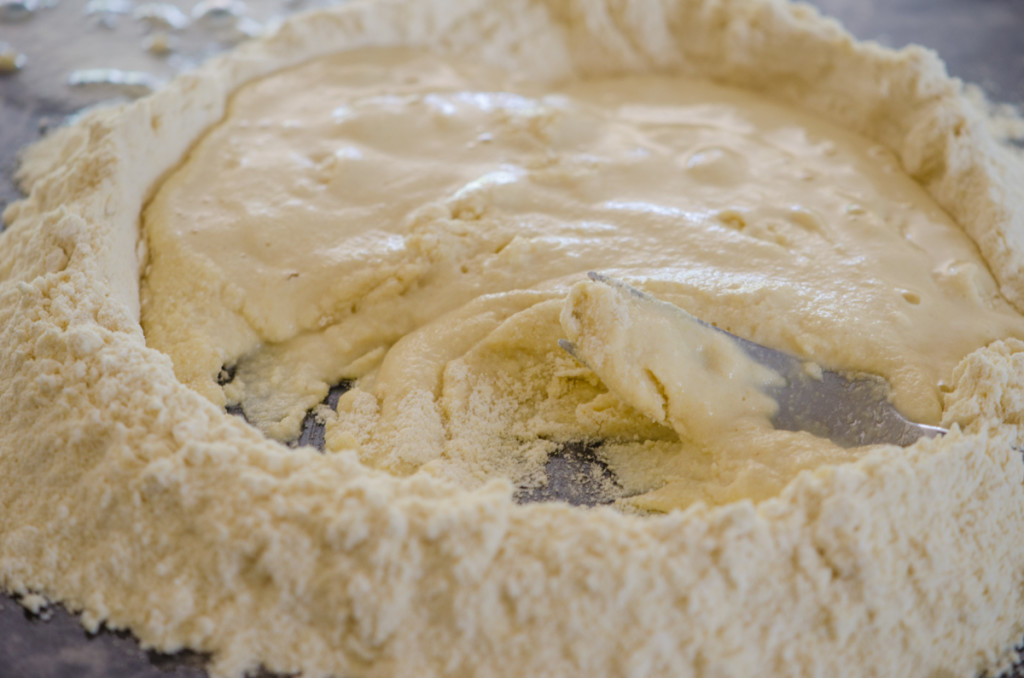 Knead the dough for about 10 minutes or so, adding a bit more flour only when it begins to stick. Cover the dough, and allow to rest for 30 minutes.
Knead the dough for about 10 minutes or so, adding a bit more flour only when it begins to stick. Cover the dough, and allow to rest for 30 minutes.
To form your pici:
Pinch off a small piece of dough and roll between your palms or on a wooden board to form 1/4 inch round snakes. Place the formed pici on a sheet pan dusted with semolina flour. Do not allow them to touch, as they will stick to each other.
or
Divide the dough in 4 pieces. Take one, and cover the rest with plastic wrap. Roll out into a sheet around 1/4” to 1/2” inch thick. Cut a strip of dough about 1/4” thick from this sheet, grasp one end in your fingers to hold, then, using a flat palm, roll the noodle back and forth on a floured wooden board to round and lengthen. The result should be a rounded, thick spaghetti that can, in expert hands, reach 3 – 6 feet in length. Here’s a YouTube video showing this technique. Place the formed pici on a sheet pan dusted with semolina flour. Do not allow them to touch, as they will stick to each other. Continue with the remaining 3 pieces of dough.
or
Divide the dough in 4 pieces. Take one, and cover the rest with plastic wrap. Roll into a sheet around 1/8” thick, then cut this sheet into thin flat strips around 1/4” wide. Take each strip, and roll the noodles on a floured wooden boards with your palm to form rounded, thick spaghetti. On a granite counter top, and my flat noodles didn’t roll, they just slid around. In this case, you can twist each flat strip between your thumb and fingers to form the long round spaghetti. Place the formed pici on a sheet pan dusted with semolina flour. Do not allow them to touch, as they will stick to each other. Continue with the remaining 3 pieces of dough.
For the sauce:
Coarsely chop and seed the fresh tomatoes.
Bring a large pot of water to boil.
In a large saute pan, heat the olive oil and red pepper flakes. Add the tomatoes and garlic, and cook over medium heat until the tomatoes soften, render their juice and begin to thicken, around 15 – 20 minutes. Season with salt.
When the water is at a full boil, season the water with salt, and add the fresh pici. Cook just until al dente; you want some bite to the pici, not mushy. Drain.
Combine the pici and the sauce in the saute pan, then serve in large bowls, drizzling liberally with more olive oil and garnishing with the basil strips.
